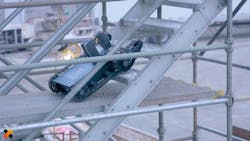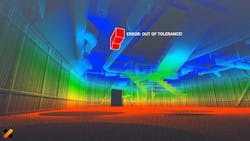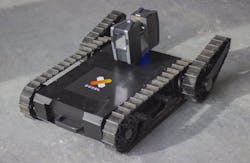Rovers set to invade construction jobsites
By David Malone, Associate Editor
The larger a construction project is, the more complicated it is going to be to manage. Small oversights or errors can lead to exponentially greater losses in time and money.
Doxel, a new construction productivity solution, claims to simplify the construction management process to help avoid these costly loses. Doxel’s preferred solution? Robots equipped with new artificial intelligence-based computer vision software.
In addition to drones capturing the site from above, Doxel uses rovers to comb through the site and gain the most accurate, up-to-date information. Part WALL-E, part MSE-6 mouse droid from “Star Wars,” Doxel’s self-directing robots survey building sites each day to capture HD imagery and laser scans at all stages of construction. The robots can traverse uneven terrain, multiple terrain types such as rock, concrete, or dirt, and can even climb stairs. Once in the correct position, the robot will stop and take a 360-degree scan of a space before moving on to the next area.
Working behind the software is a 3D semantic understanding algorithm developed by Doxel. This algorithm classifies objects in real-world construction environments with a high level of reliability. 3D computer vision was used because a 3D neural network, theoretically, requires fewer datasets for training than 2D. This new computer vision algorithm avoids the issues commonly associated with scans such as occlusion and poor visibility. It also is able to interpret clutter from installed materials.
Doxel’s algorithms classify installed components and measure quantities in real-time. This data is then cross-referenced with the project estimate to provide instant feedback of where a project stands financially. The software calculates earned value for thousands of line items to provide an exact amount owed for a day’s work.
Doxel also tracks model-to-field deviations instantly to catch and correct errors early, before they cost time and money to rectify. The AI software deep links to the project schedule and detects when a crew falls behind. Alerts are sent via an integrated app notifying everyone of the delay so managers can re-prioritize and optimize labor
productivity.
Integrated cloud software makes it easy to track progress over time for things like plumbing, electrical, and mechanical. In one case study, Doxel increased productivity by 38% and helped the project team deliver the project 11% under budget.


